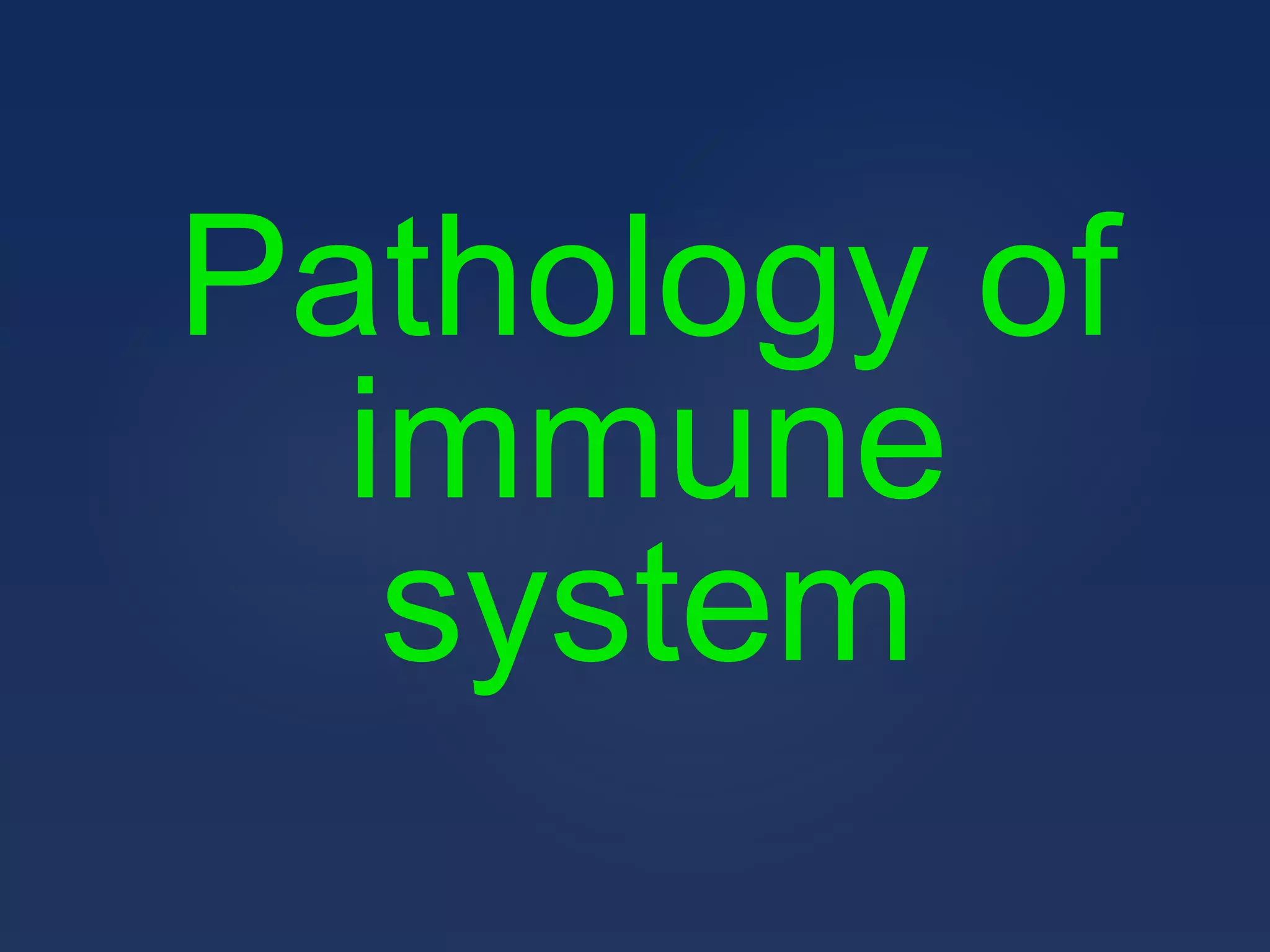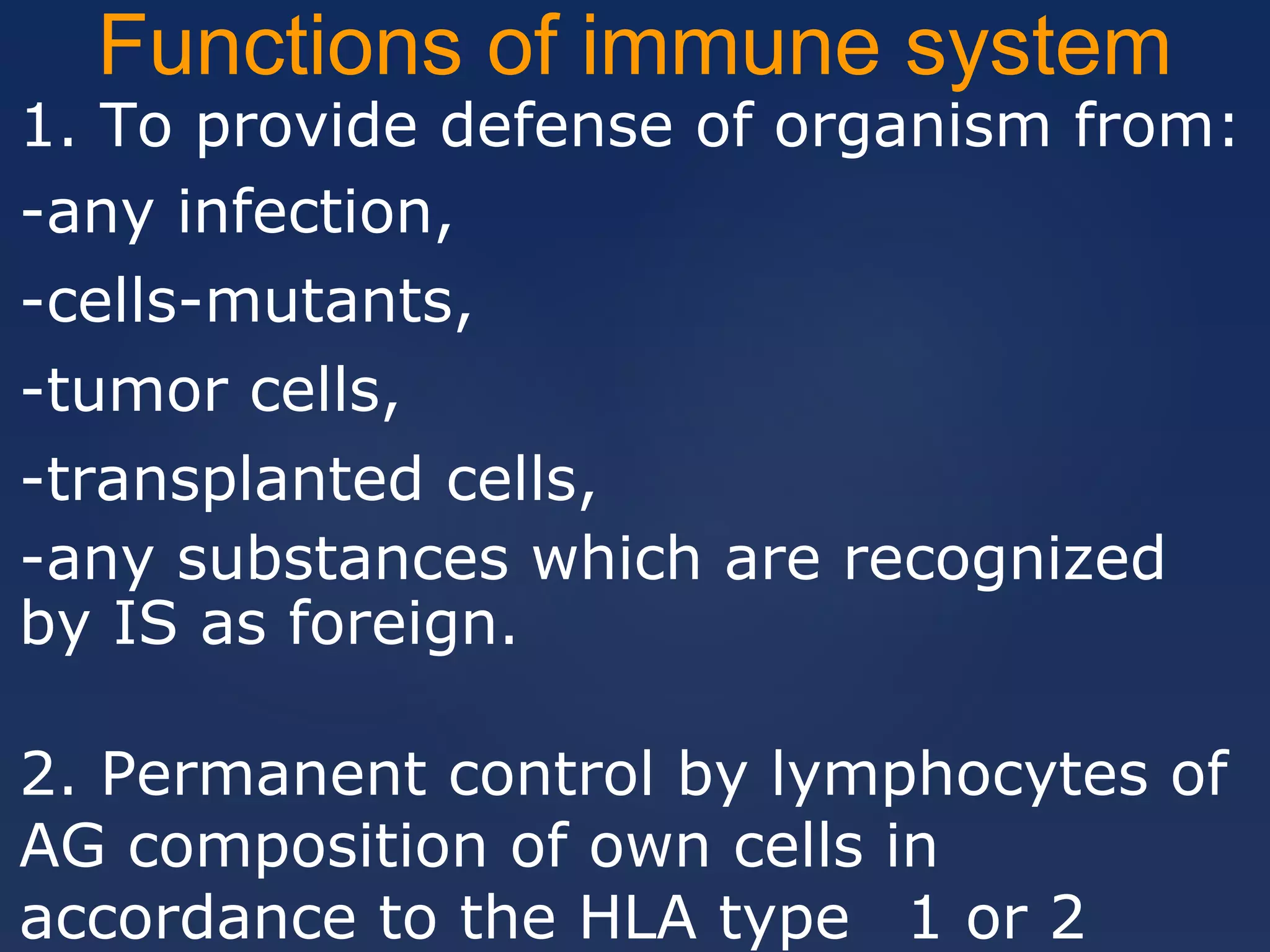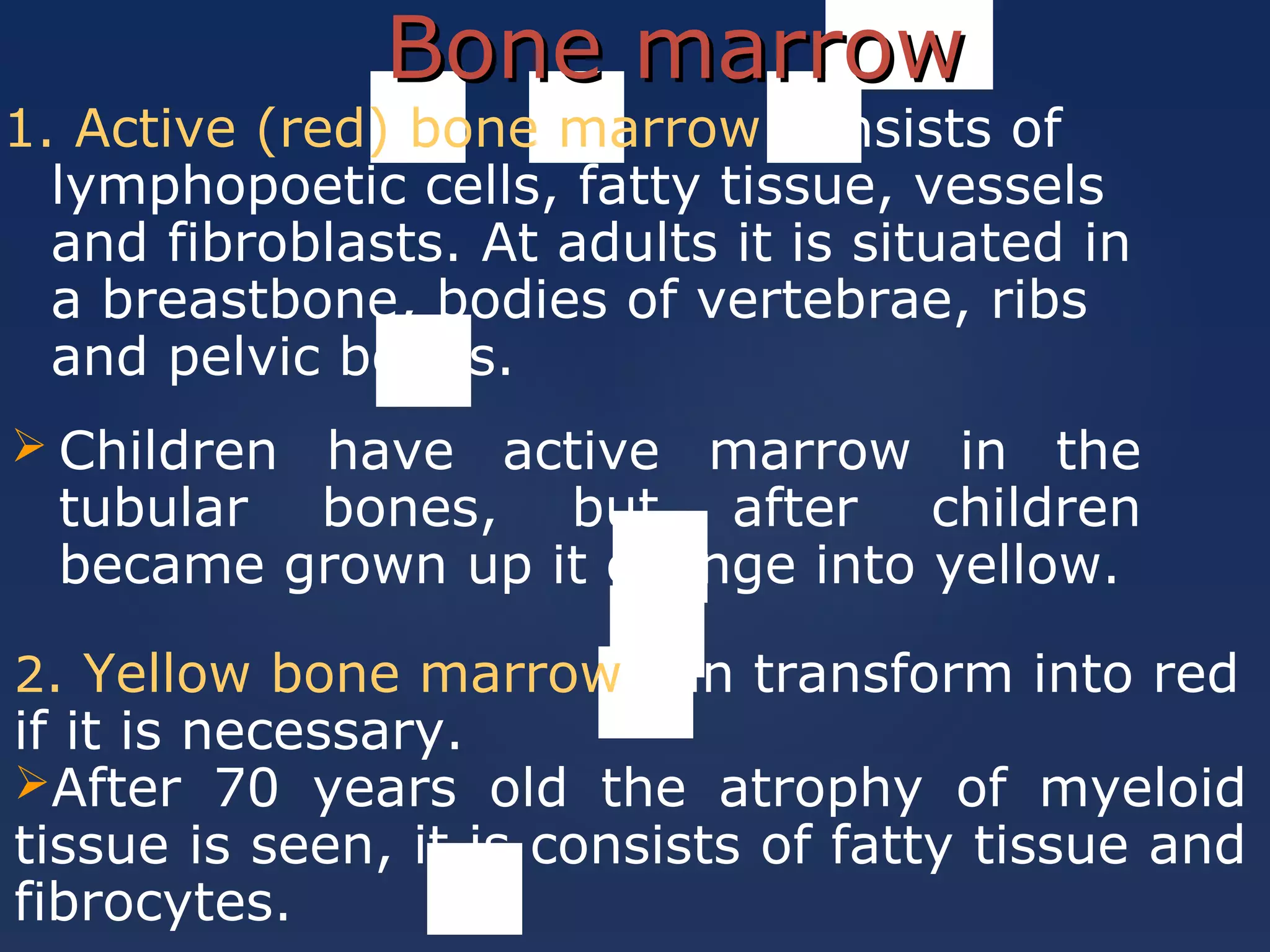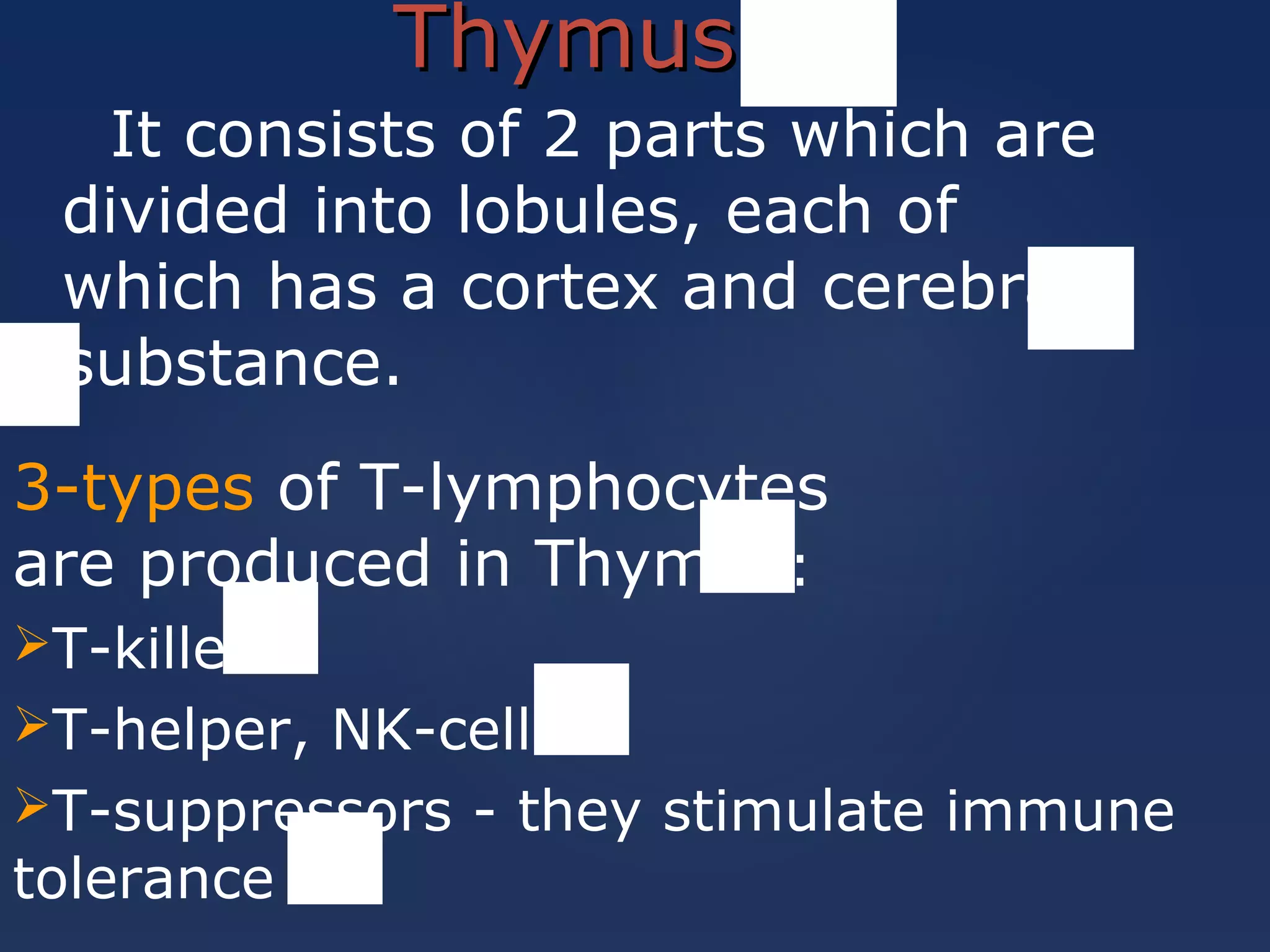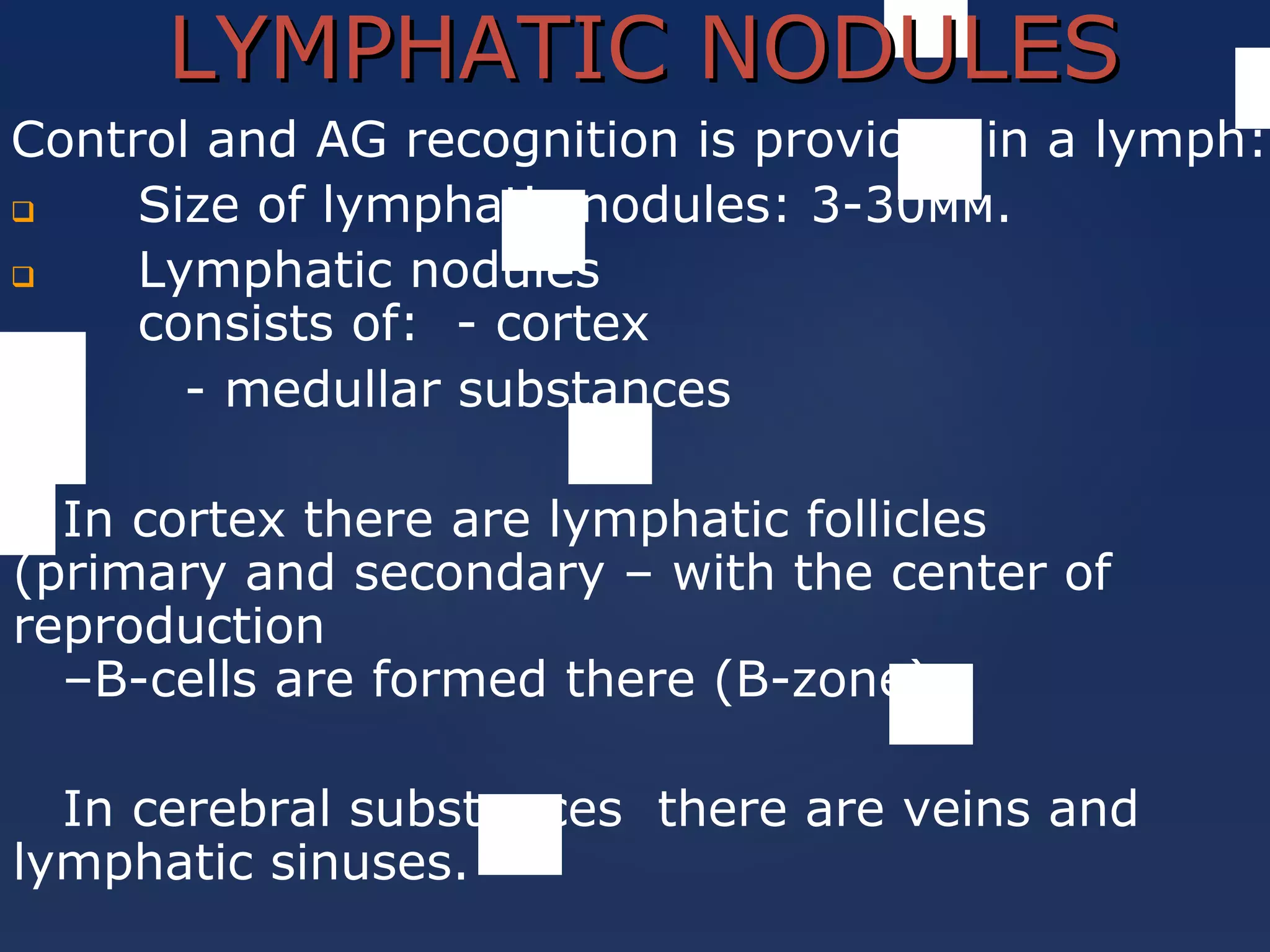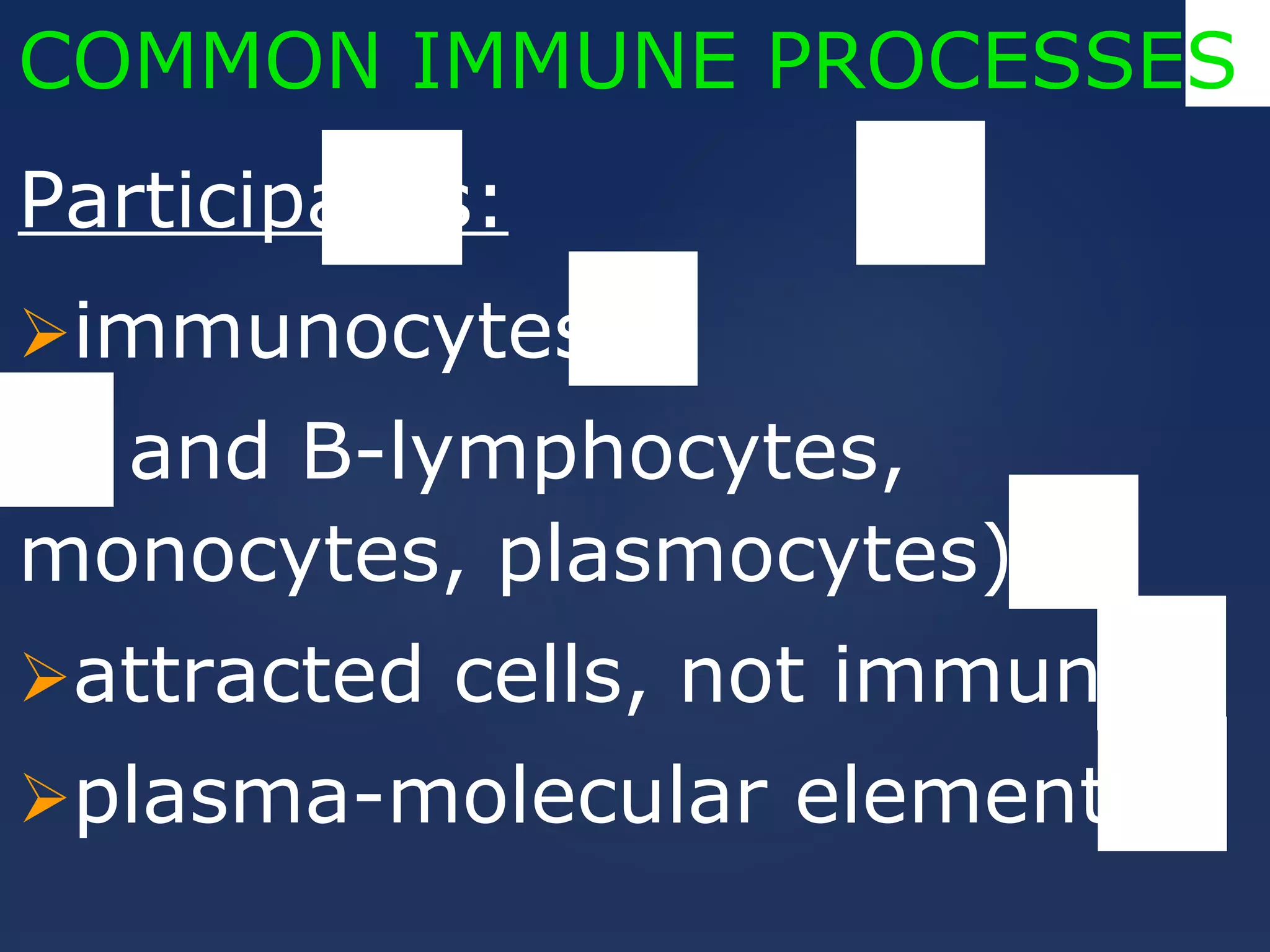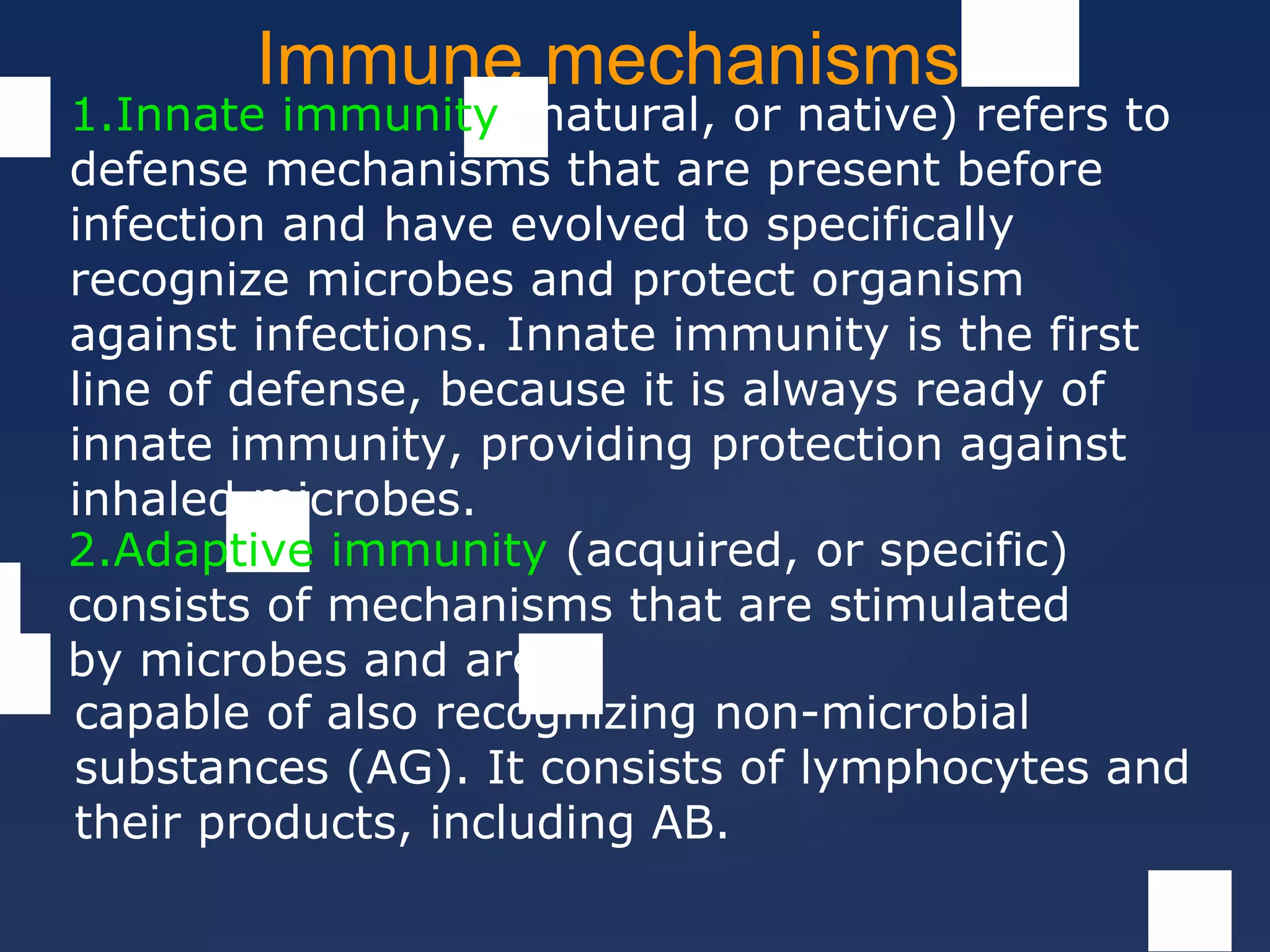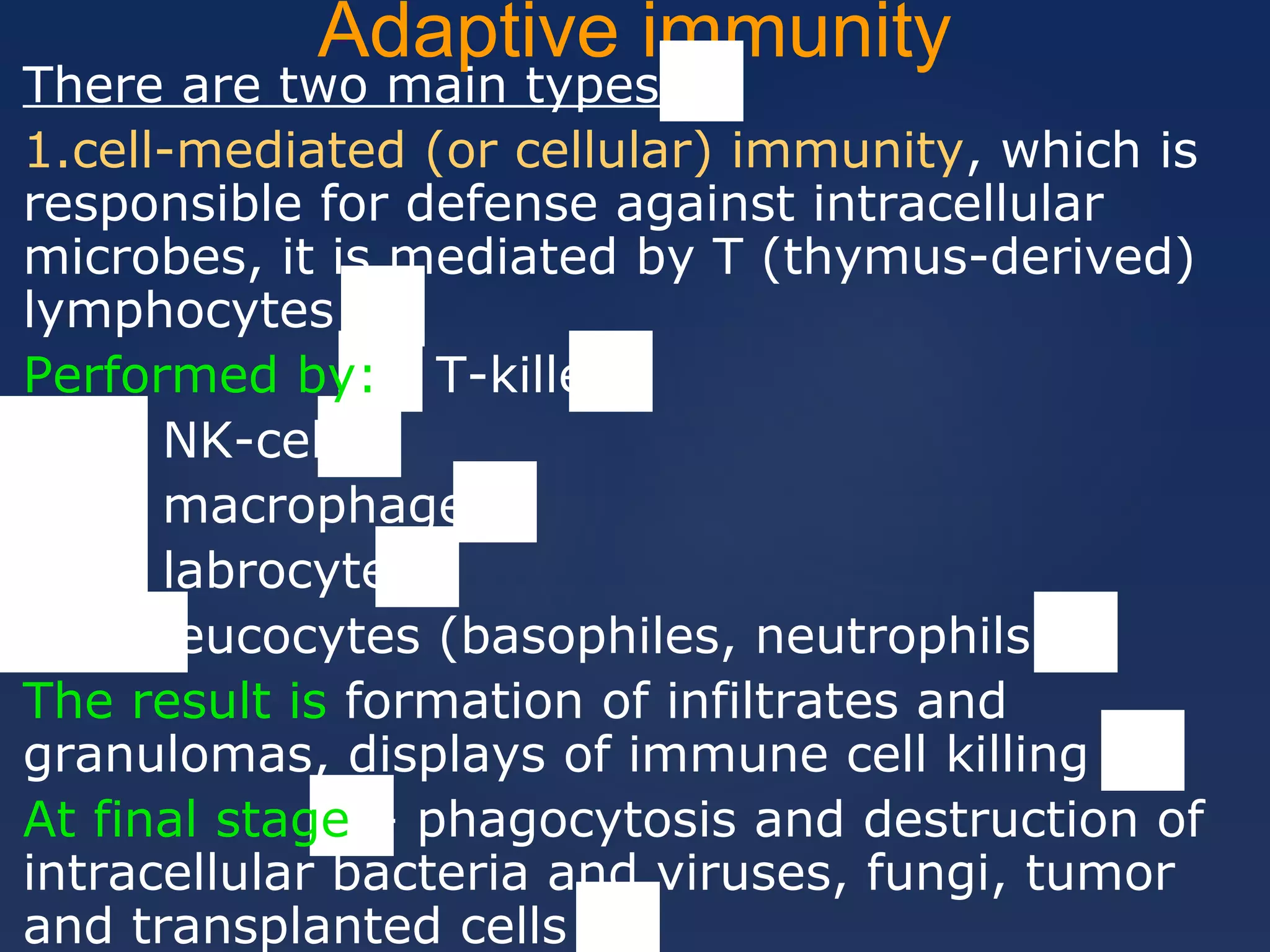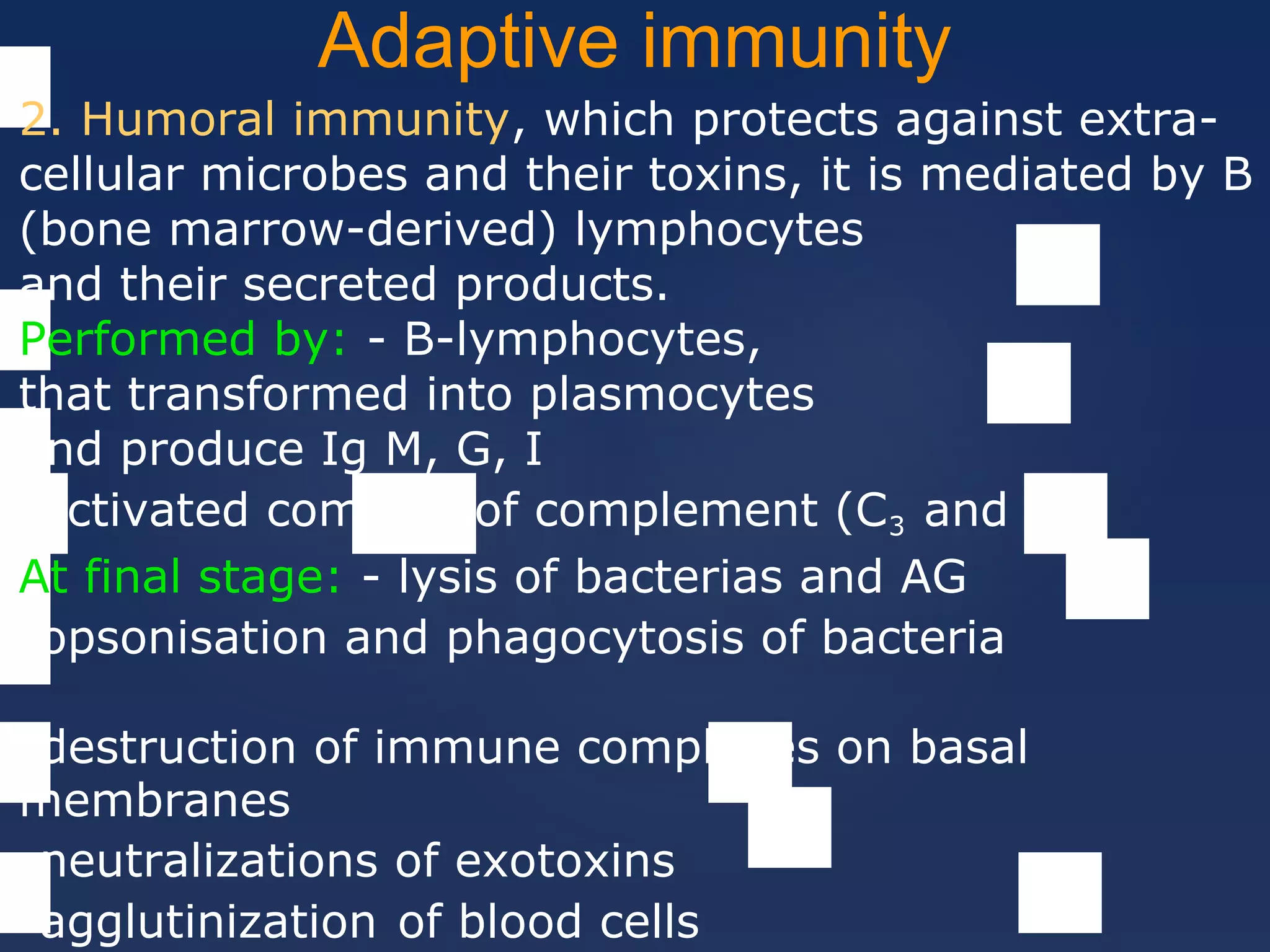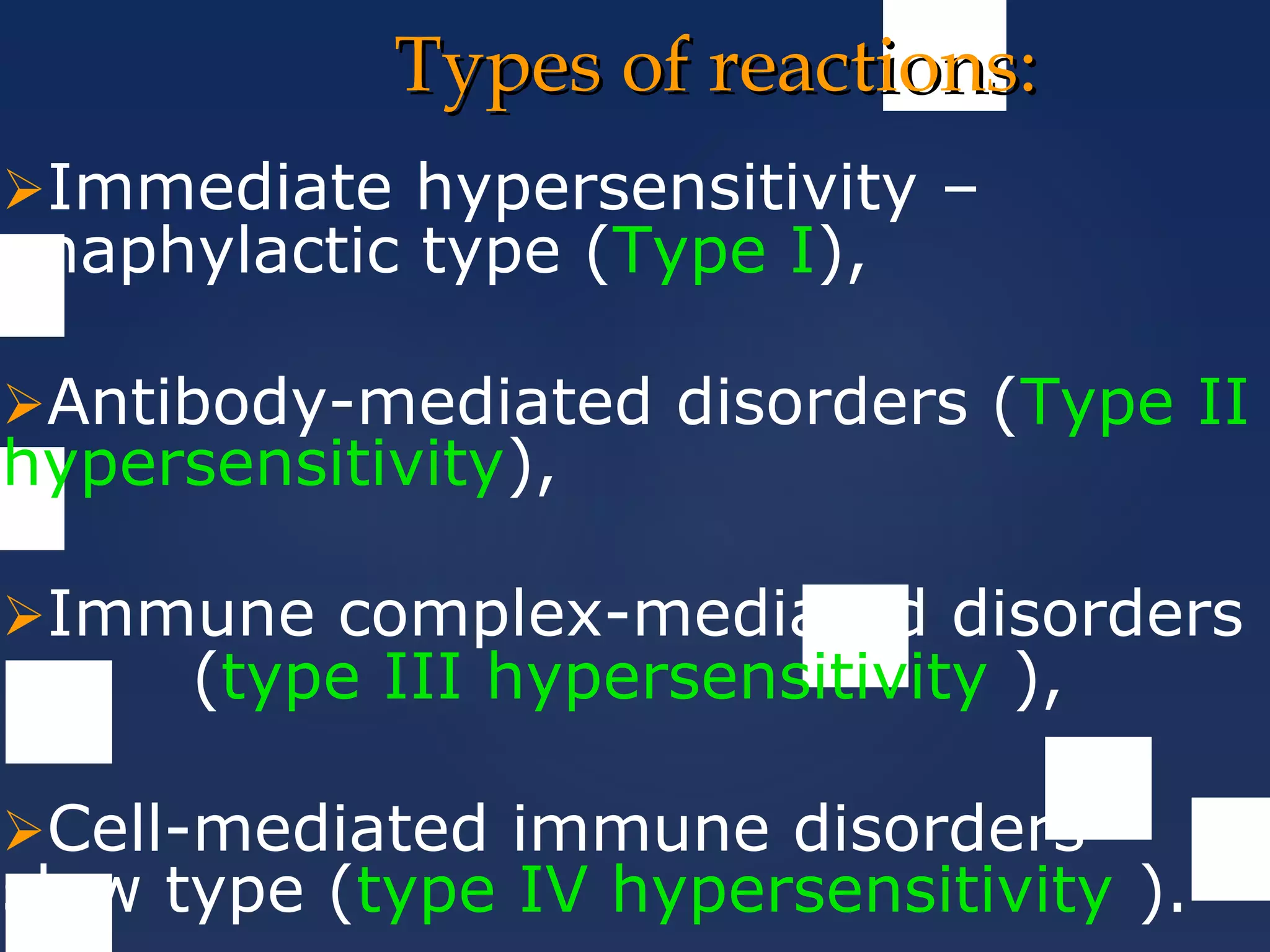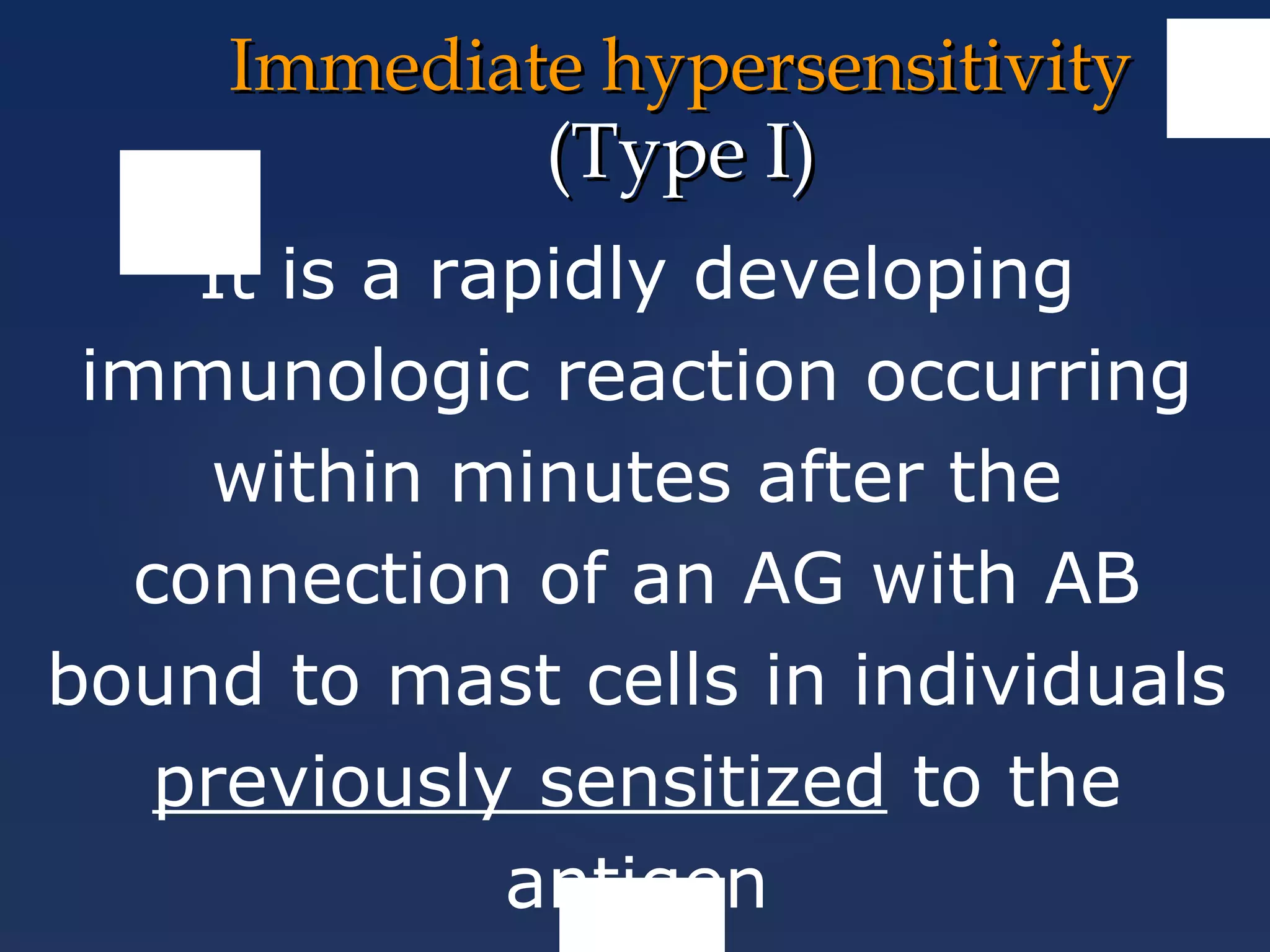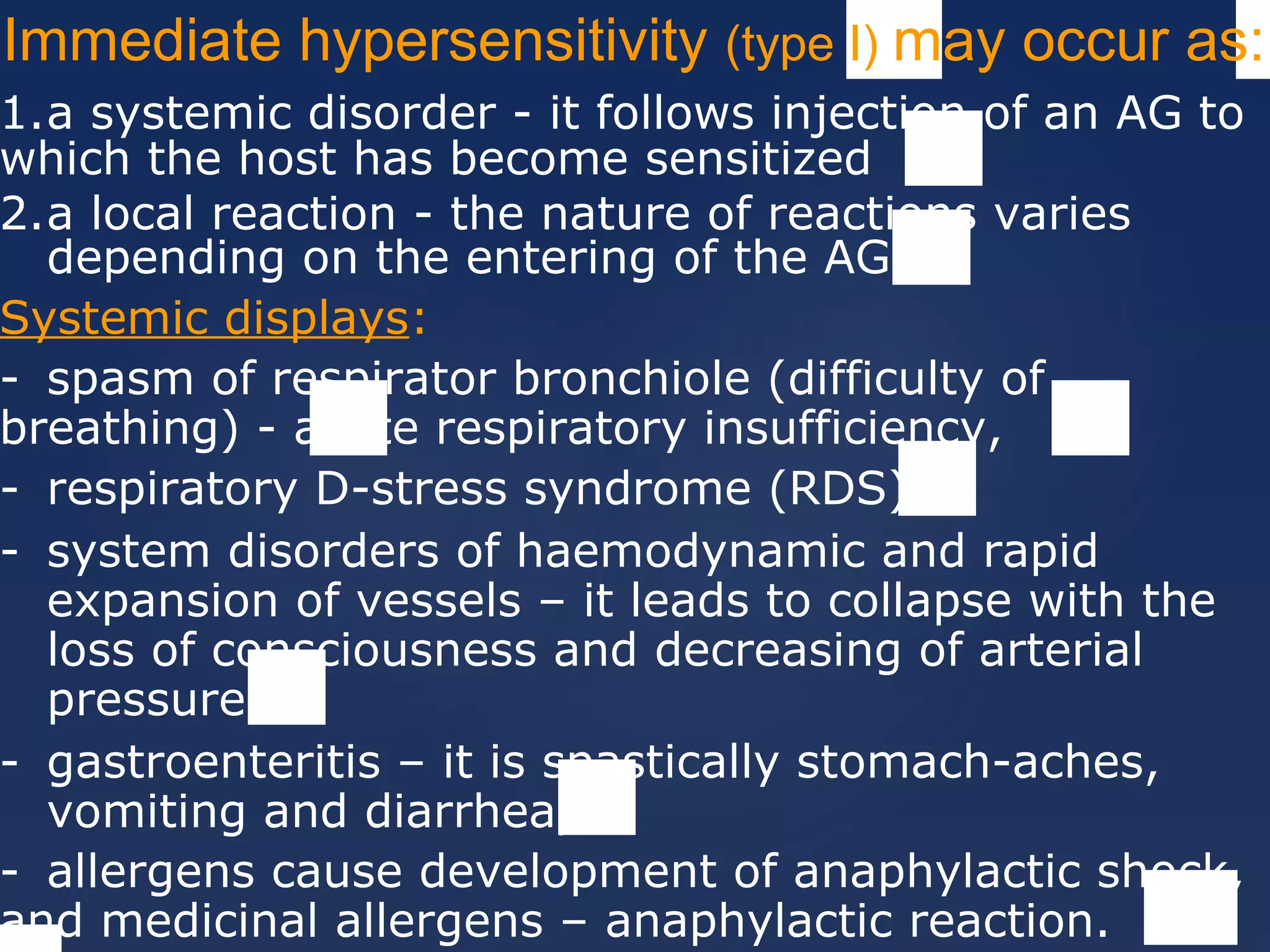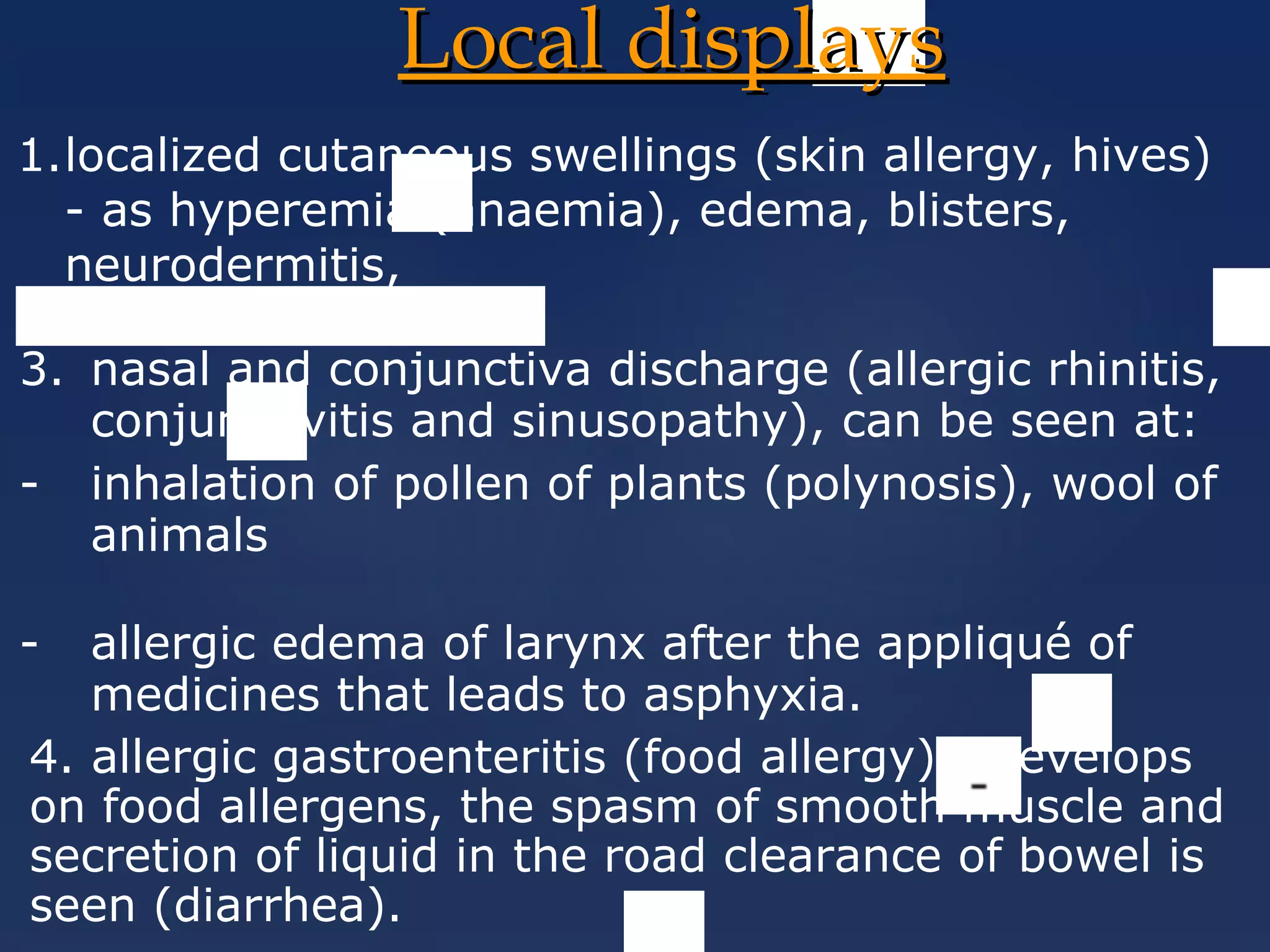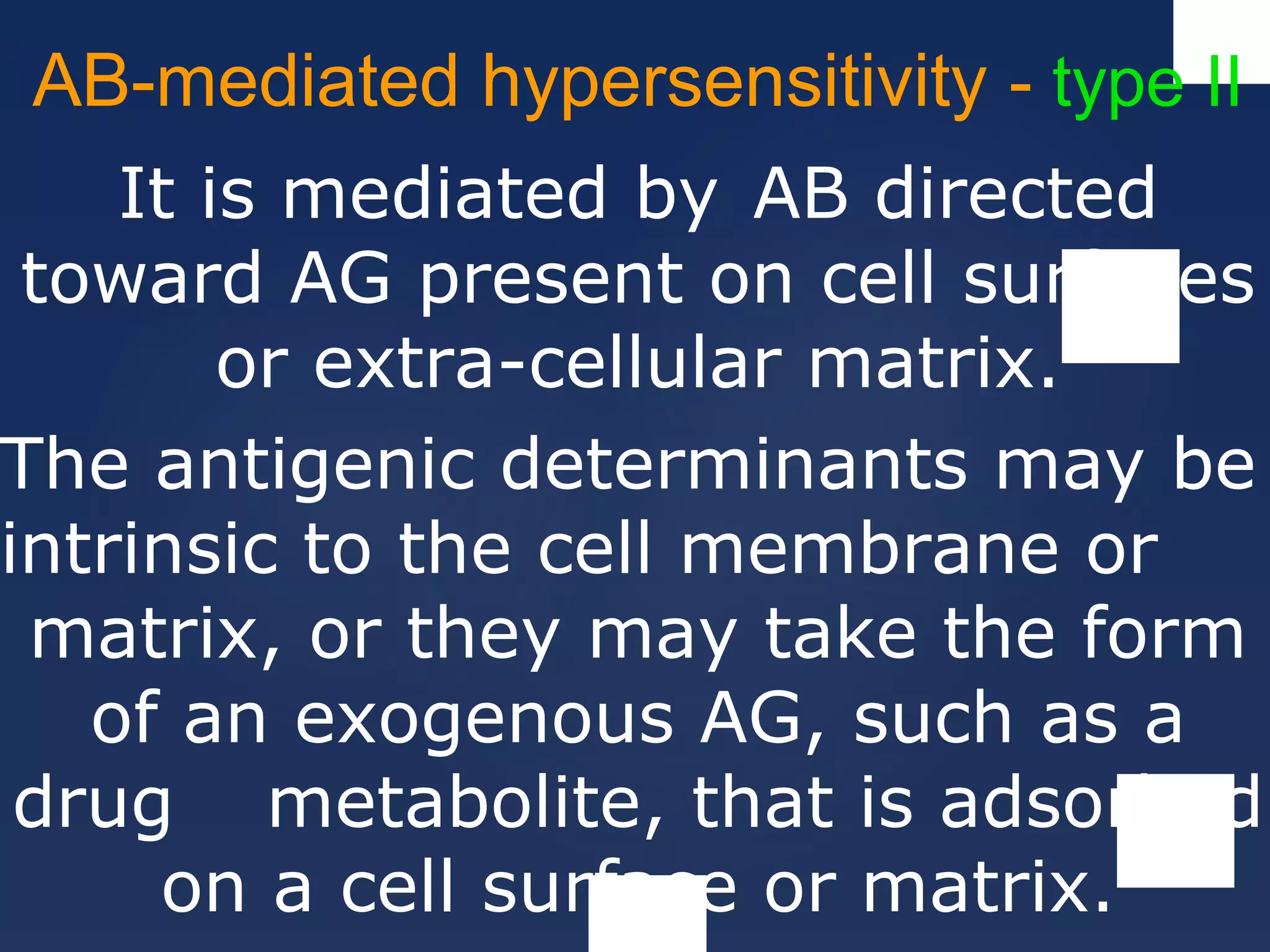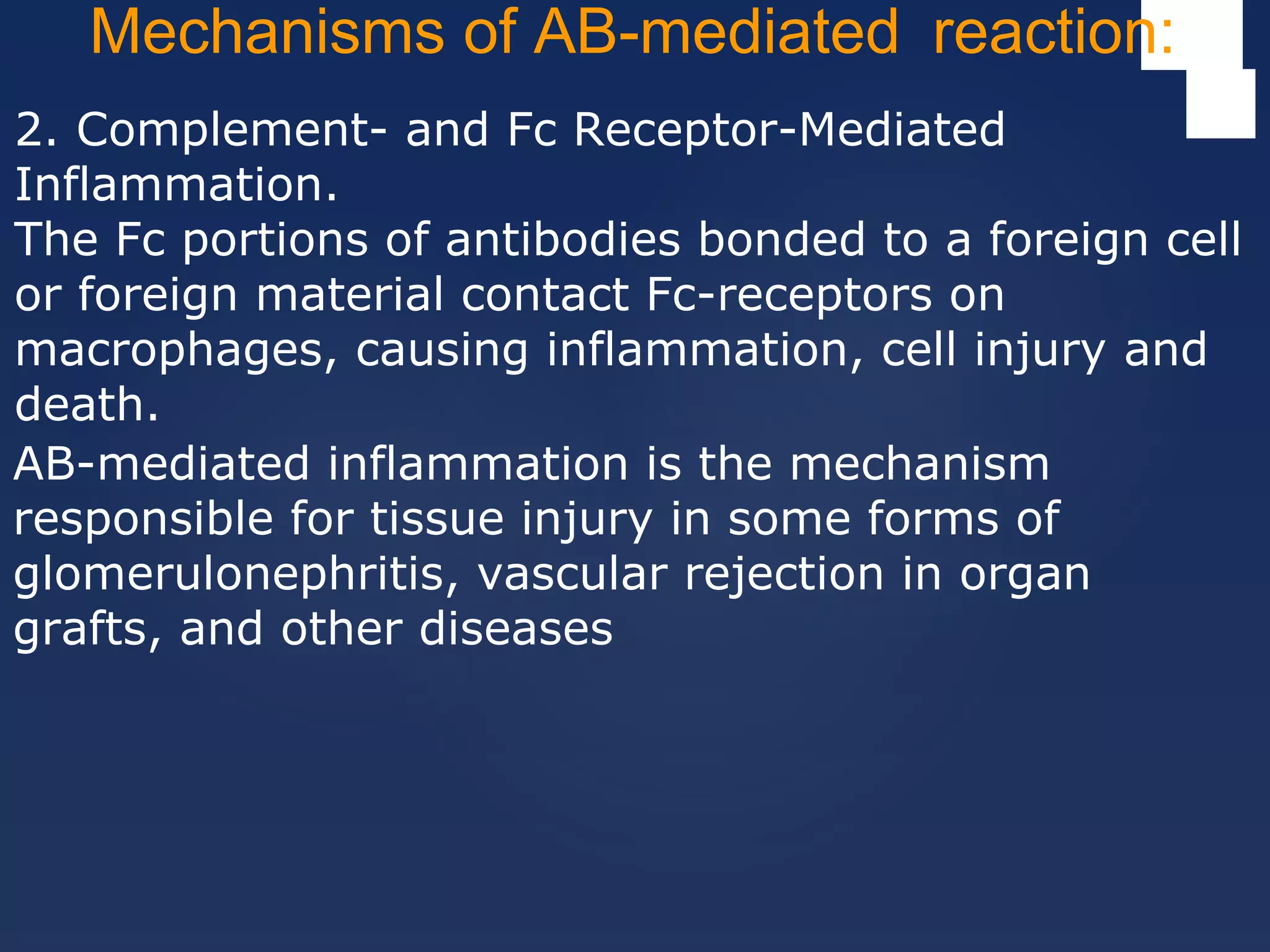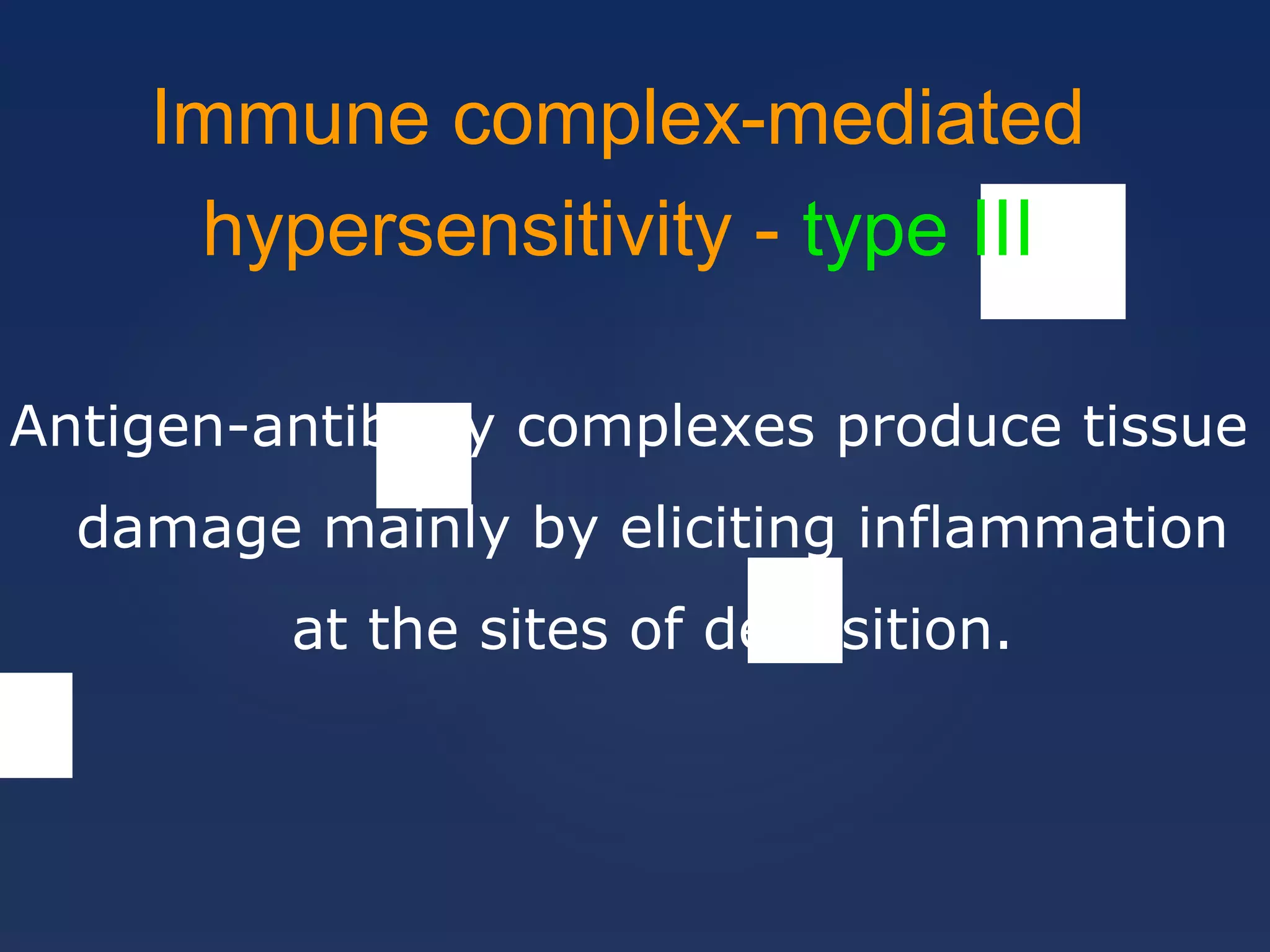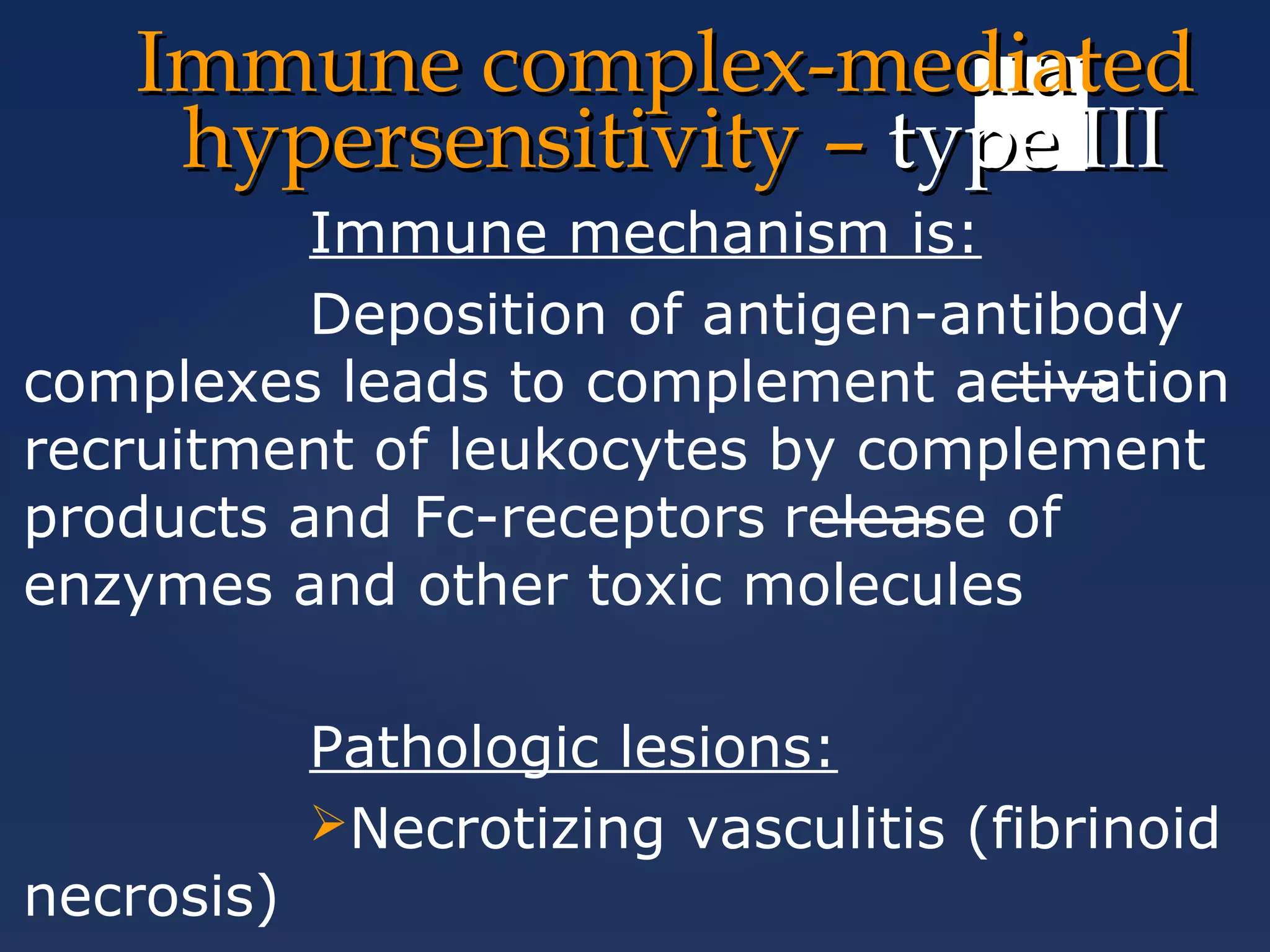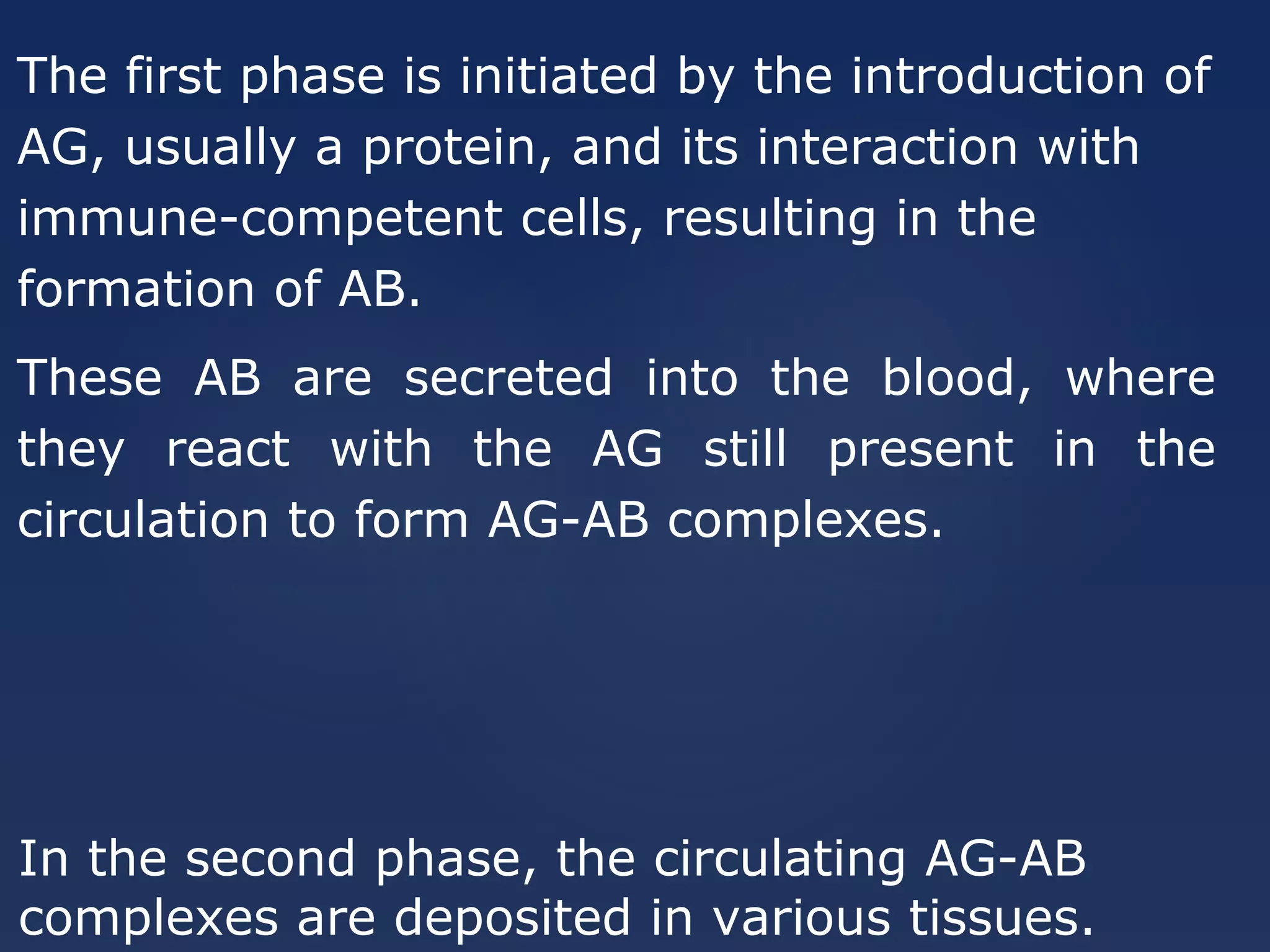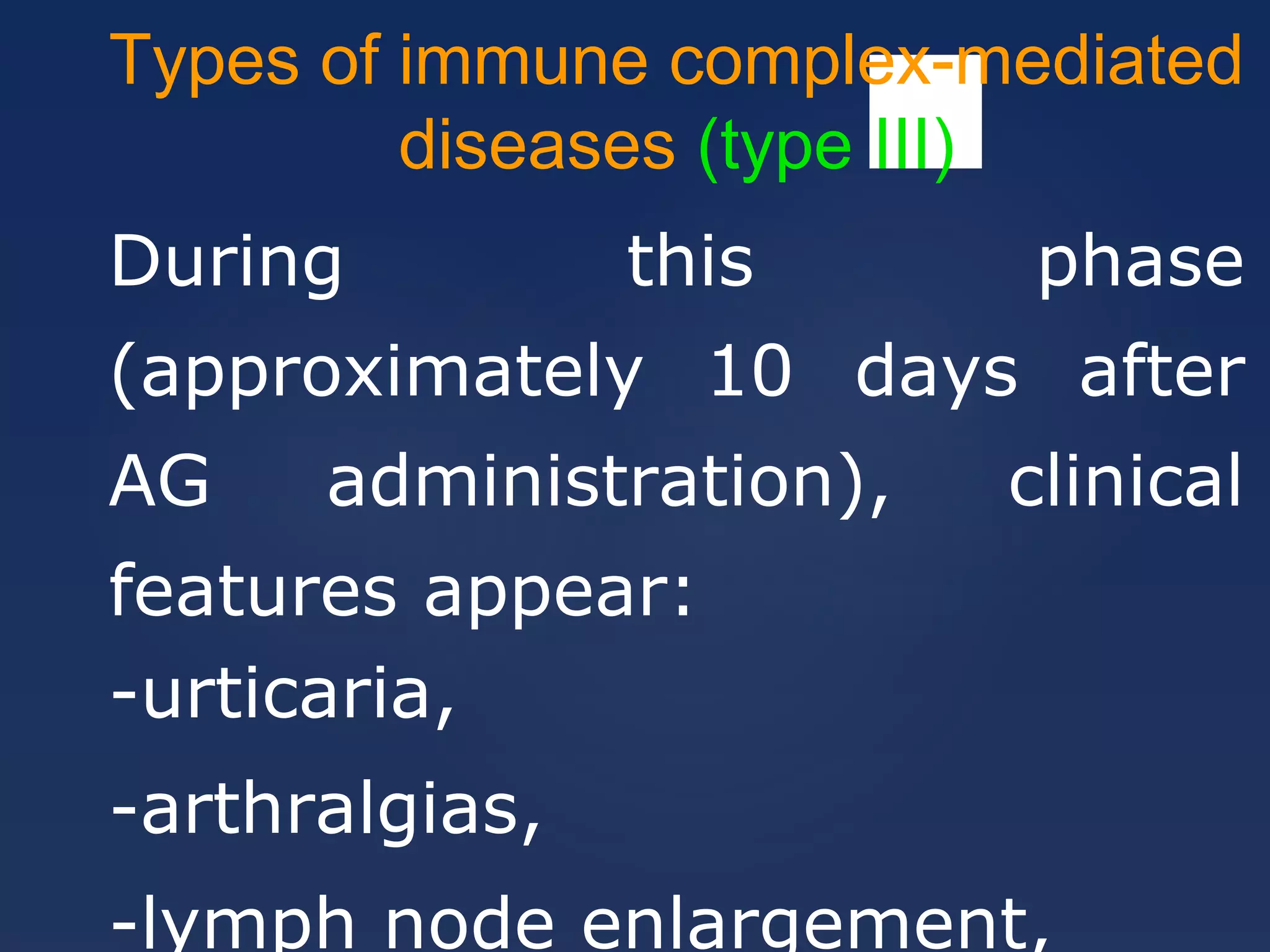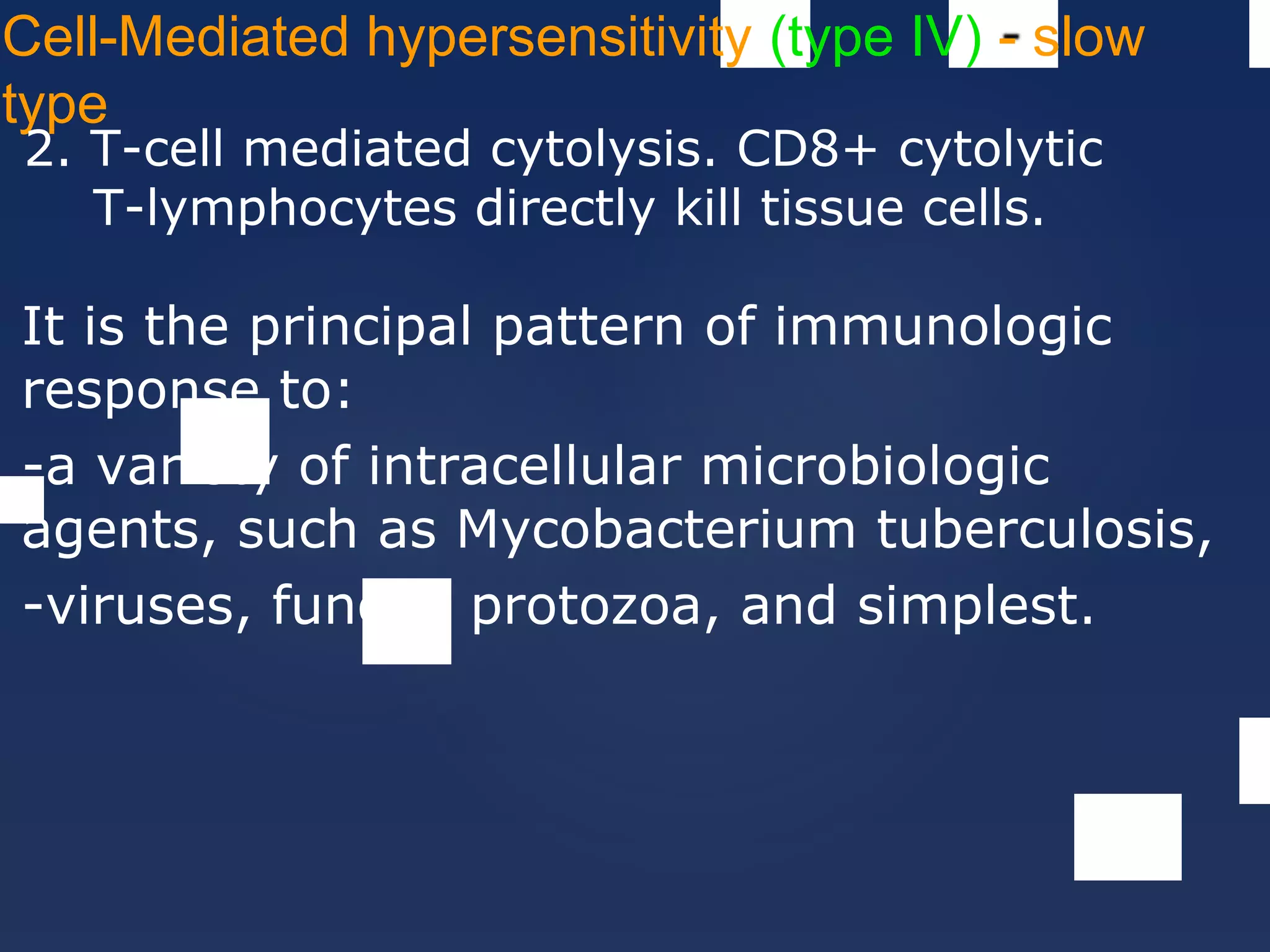The document summarizes the key components of the immune system including its organs, functions, and common pathological processes. The central organs that produce immune cells are the bone marrow and thymus. Peripheral organs like lymph nodes, spleen, and mucosa-associated lymphoid tissue aid in immune cell differentiation and antigen recognition. The immune system provides defense against infection, cells with mutations, tumors, transplanted cells, and foreign substances. Its functions include innate immunity as the first line of defense and adaptive immunity involving lymphocytes and antibodies. Common pathological processes of the immune system include hypersensitivity reactions, immunodeficiencies, autoimmune diseases, and tumors of the lymphatic system.
